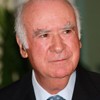This website is intended for healthcare professionals only.
Take a look at a selection of our recent media coverage:
14th December 2020
For a number of years, hospitals have been required to act more efficiently and to increase productivity, and increased performance is indeed apparent. Yet, healthcare systems are facing conflicting trends: short and long-term impacts of financial and economic restrictions; increasing demand of an ever-expanding and ageing population, which leads to more chronic patients; increasing request and availability of technological innovations; new roles, new skills and new responsibilities for the health workforce; and, more recently, the impact of the Covid-19 crisis.
To adapt to this situation, the role of hospitals is evolving further. Most health systems have already moved from a traditional hospital-centric and doctor-centric pattern of care to integrated models in which hospitals work closely with primary care, community care and home care.
The figures given in this document provide the most updated comparative picture of the situation of healthcare and hospitals, compared with the situation in 2006, just before the previous financial and economic crisis. They aim to increase awareness on what has changed in hospital capacity and, more generally, in secondary care provision within EU member states, generating questions, stimulating debate, and thereby fostering information exchange and knowledge sharing.
The main source of data and figures is the OECD Health Statistics (last update July 2020). Data on health expenditure as a percentage of total general government expenditure and on hospital beds in public- or privately-owned hospitals have been extracted from the Eurostat Database on Economy and Finance (last update May 2020) and on Health (last update February 2020), respectively. All EU member states belonging to OECD are considered, plus Switzerland, United Kingdom (UK) and Serbia (as HOPE has members in those countries), when data are available. In the text, these are reported as EU. Whenever considered appropriate and/or possible, two groups have been differentiated and compared: EU15, for the countries that joined the EU before 2004 (Austria, Belgium, Denmark, Finland, France, Germany, Greece, Ireland, Italy, Luxembourg, Netherlands, Portugal, Spain, Sweden and the UK) and EU13, for the countries that joined the EU after 2004 (Bulgaria, Cyprus, Czech Republic, Croatia, Estonia, Hungary, Latvia, Lithuania, Malta, Poland, Romania, Slovakia and Slovenia). When averages are reported, they are the results of our own calculations. The considered trends normally refer to the years 2006–2016. When data on 2016 are not available, or they have not been gathered for a sufficient number of countries, the closest year is considered. Some figures are disputed for not being precise enough but at least they give a good indication of the diversity.
The current health expenditure per capita is diverse in Europe. In EU15, the total current health expenditure in purchasing power parity in dollars per capita (PPP$) in 2017 ranged from 2238 PPP$ in Greece and 6010 PPP$ in Germany, whereas in EU13, this ranged from 1679 PPP$ in Latvia to 2853 PPP$ in Slovenia. In Switzerland, this reached 7037 PPP$ (Chart1).
Compared with 2006, the total health expenditure per capita in 2016 varied positively in all the countries taken into consideration in this analysis except in Greece where there was a decrease of -12%. Major increases have been registered in EU13: Estonia (+110%), Lithuania (+107%) and Poland (+103%). Smaller increases were registered in Spain (+36%), Italy (+25%) and Portugal (+24%), all belonging to EU15.
The total current health expenditure has increased on average of 50% in the EU in the last ten years.
Current public health expenditure includes all schemes aimed at ensuring access to basic health care for the whole society, a large part of it, or at least some vulnerable groups. Included are government schemes, compulsory contributory health insurance schemes, and compulsory medical savings accounts. Current private health expenditure includes voluntary health care payments schemes and household out-of-pocket payments. The first component includes all domestic pre-paid health care financing schemes under which the access to health services is at the discretion of private individuals. The second component corresponds to direct payments for health care goods and services from the household primary income or savings: the payment is made by the user at the time of the purchase of goods or use of the service.1
In 2017, the percentage of public sector health expenditure to the total current health expenditure exceeded 70% in most countries, except for Latvia (57%), Greece (60%), Portugal (61%), Hungary (69%), Lithuania (66%) and Poland (69%) and, outside the EU, in Switzerland (66%) (Chart 1).
In recent years, health expenditure of the public sector has accounted on average for 74% of total health expenditure and 24% of the total government expenditure.
Between 2006 and 2016, the public health expenditure in PPP$ per capita increased on average by almost +50%. The countries that registered the most significant increases were Lithuania (+105%), Poland (+105%) and Estonia (+117%), whereas those that registered minor increases were Luxembourg (+15%), Portugal (+19%) and Italy (+20%). Greece was the only country where this indicator decreased (-15%).
Chart 2 shows the last ten-year trend concerning the share of government expenditure in health. It presents the aggregated data concerning the EU, and the figures of the three countries having the highest and the lowest values in the year 2017, Switzerland and UK included.
In 2017, the percentage of government expenditure devoted to health in total health expenditure ranged from 7% in Cyprus to 20% in Ireland.
The trends illustrated in Chart 2 are generally positive between 2007 and 2017 with an average yearly increase of percentage of government outlays devoted to health by 0.08 p.p. Yet, from 2009 to 2010, this way of development slackened in many countries, the reasons being the effects of the financial crisis or the shift of interest and priorities to other sectors.
Out-of-pocket payments show the direct burden of medical costs that households bear at the time of service use. Out-of-pocket payments play an important role in every health care system.
In 2017, the private contribution to healthcare spending was around 24% in the EU, ranging from 17% in France to 35% in Latvia. Lowest values were registered in Luxembourg (16%), Germany (15%), the Netherlands (18%) and Sweden (15%), whereas highest values were registered in Latvia (43%), Hungary (31%) and Greece (40%). It is worth noting that Latvia, Hungary and Greece are at the same time among the countries with the lower current health expenditure on health in PPP$ that year (Chart 1).
Chart 3 illustrates the trend between 2006 and 2016 of both the total current health expenditure per capita and the private households’ out-of-pocket payments on health. These values present a correlation (R2 = 0.6147) showing that there is dependence between the two indicators. The chart highlights the fast growth of both expenses in the countries shown in the upper right part of the graph corresponding to countries belonging to EU13. In those at the lowest-left part of the graph, the out-of-pocket payments grew more slowly compared with total current health expenditure.
Between 2007 and 2017 the household out-of-pocket payments in PPP$ per capita has increased in all the EU countries, except for Greece (-5%) and Slovakia (-12%) (Chart 3). The most relevant increases in EU15 have been registered in The Netherlands (+81%). In Switzerland, the indicator variated in the years taken into consideration of +48% and the UK had an increase of +47%. In EU13, according to available data, highest increases were registered in Latvia (+76%), Czech Republic (+89%) and Lithuania (+122%) (Chart 3). The total household out-of- pocket payments in PPP$ per capita continued to increase, as the demand of healthcare services and, in turn, the total health expenditure did.
In the majority of the EU member states, 30%–40% of current health expenditure (excluding investments and capital outlays) finances hospital care. The funds allocated to providers of long-term care, ancilliary services, ambulatory care, preventive care as well as to retailers and other providers of medical goods are excluded from this computation.
In 2016, current hospital expenditure represented about 38% of total current health expenditure, ranging respectively from 29% and 32% in Germany and Latvia, to 46% and 47% in Italy and Estonia (Chart 4). In all countries, even if a part of the total health expenditure is always funded by private insurances and out-of-pocket payments, almost the entire amount of inpatient health expenditure is financed publicly (Chart 4). The total expenditure on in-patient care (PPP$ per capita) in the EU follows, on average, a growing positive trend. The exception is in Greece, where data available show that this indicator varies negatively (-19%).
Pharmaceutical expenditure covers prescribed medicines, over-the-counter and other medical non-durable goods. One of the indicators taken into consideration for 2016 is the expenditure on pharmaceuticals and other medical non-durable goods, as a percentage of current health expenditure. The countries that registered the lowest rates for this indicator are Denmark (7%), The Netherlands (8%), Luxembourg (9%) and Sweden (10%), whereas the highest rates were registered in Greece (26%), Lithuania (27%), Latvia (28%) and Hungary (29%).
Between 2006 and 2016, the percentage of pharmaceutical expenditure on total current health expenditure has generally declined in all Europe. In 2016, the total pharmaceutical expenditure was encompassed between 335 PPP$ and 369 PPP$ per capita in Denmark and Poland respectively, and 777 PPP$ and 1080 PPP$ per capita in Germany and Switzerland, respectively. At least half of it was held by the public sector in all countries except Denmark (44%), Latvia (35%) and Poland (34%) and Lithuania (33%). The highest values in 2016 were in Germany (84%), Luxembourg (80%), Ireland (77%), France (76%) and Slovakia (71%). In 2016, the pharmaceutical expenditure in PPP$ per capita held by the public sector was encompassed between 124 in Poland and 655 in Germany.
Chart 5 explores the relationship between the trend of the total and the public pharmaceutical expenditure between 2006 and 2016. In a group of outlier countries (upper right section of the chart) encompassing Estonia, Latvia and Lithuania, both the public and the total spending variates substantially. In Portugal, Luxembourg and Greece, the same indicators variated negatively.
From 2006 and 2016 in the EU, the total pharmaceutical expenditure decreased more than the public pharmaceutical expenditure, which decreased as well but at a slower pace. This suggests that a progressively larger part of the total pharmaceutical expenditure pertains to the private sector. This shift may also indicate that the ‘willingness to pay’ and the consumption of pharmaceuticals by private owners are increasing.
In the last 15 years, healthcare reforms or other initiatives implemented all over Europe aimed at rationalising the use and provision of hospital care, improving its quality and appropriateness, and reducing its costs. The number of hospital facilities decreased in most countries while the number of hospital beds decreased on average. These reforms/initiatives also resulted in a broad reduction of acute care admissions and length of stay, as well as in improvements in the occupancy rate of acute care beds.
During those years, almost all European countries made changes in their hospital provision patterns; major efforts were addressed to delivering better services, increasing quality, improving efficiency and productivity. The streamlining of care delivery started from a sharp reduction in the size of secondary care institutions and moved towards more integrated and efficient patterns of care, which might result in the future in completely overcoming the hospital-centric model of care.
This was possible thanks to a package of financial and organisational measures addressed to improve coordination and integration between the different levels of care, increase the use of day-hospital and day-surgery and introduce new and more efficient methodologies of hospital financing in order to incentivise appropriateness (for example, the replacement of daily payments – known to encourage longer hospitalisation – by prospective payment).
In most European countries, these policies led to changes in the management of patients within hospitals and offered a possibility to reduce the number of acute care hospital beds. Only the bed-occupancy rates registered more disparate trends across Europe, depending also on the demographic and epidemiological structure of the population and from the specific organisation of local, social and healthcare systems, that is, the structure of primary care, the presence and the efficiency of a gate-keeping system, the modality of access to secondary care, availability of home care and development of community care.
Between 2006 and 2016 the number of hospitals decreased in most of the countries, while the number of hospital beds decreased by approximately 9%.
In 2016, there were on average 2.7 hospitals for 100,000 inhabitants, ranging from 1.4 in Slovenia to 4.8 in Finland. Moreover, there were on average 484 hospital beds for 100,000 inhabitants, ranging from 234 in Sweden to 806 in Germany.
Between 2006 and 2016, minor changes in the number of hospitals were registered in Luxembourg (-2), Slovenia (0) and the Czech Republic (+3) (chart 6). Major increases were registered in the UK (+175), France (+182), Poland (+229) and The Netherlands (+350). Major decreases were registered in Germany (-259), Italy (-193) and Ireland (-92).
In the same period, the total number of hospital beds decreased by 12% ranging from -43% in Finland (which means 302 beds cut for every 100,000 inhabitants) and -3% in Germany (which means 24 beds cut for every 100,000 inhabitants) (Chart 8). A positive variation was only registered in Poland (+3%) (Chart 8).
In several countries, the decrease in the total number of beds was accompanied by a slight increase in the number of private inpatient beds, which are inpatient beds owned by not-for-profit or for-profit private institutions (Chart 8). In 2016, in most of the countries where the data is available, the beds in private owned hospitals as percentage of all beds ranged from 1% in Slovenia and Lithuania to 38% in France (chart 9). The figure reached higher values in Cyprus (46%), Germany (59%) and The Netherlands (100%) (Chart 9).
In all the European countries, acute care hospital beds represent at least half of the total number of hospital beds.
The rate of acute care hospital beds for 100,000 inhabitants in 2016 in EU ranged from 215 in Sweden to 606 in Germany. The highest figures were observable in Belgium (512), Austria (555) and Lithuania (559) while the lowest figures in Spain (247), Denmark (251) and Italy (262) (Chart 10).
Between 2006 and 2016, the number of acute care hospital beds per 100,000 populations registered an average reduction by 13% in EU. The most significant decreases were in Latvia (-36%), Denmark (-32%) and Hungary (-28%). The only exceptions were Ireland (+3%) and Poland (+6%) (Chart 10).
The reduction in the number of hospital beds relates especially to public providers. In the countries where data are available, this trend can be associated or not with an increase of hospital beds in private organisations. It increased in Austria, Bulgaria, Croatia, Czech Republic, Germany, Latvia, Lithuania, Poland, Portugal and Romania. The countries that registered a decrease in both categories are Cyprus, Denmark, Estonia, Finland, France, Greece, Hungary, Italy, Malta, Slovenia and Spain.
The number of acute care discharges involves the entire pathway of hospitalisation of a patient, who normally stays in hospital for at least one night and then is discharged, returns home, is transferred to another facility or dies. Curative care comprises health care contacts during which the principal intent is to relieve symptoms of illness or injury, to reduce the severity of an illness or injury, or to protect against exacerbation and/or complication of an illness or injury that could threaten life or normal function. Curative care includes all components of curative care of illness (including both physical and mental/psychiatric illnesses) or treatment of injury; diagnostic, therapeutic and surgical procedures and obstetric services. It excludes rehabilitative care, long-term care and palliative care.
In 2016, the rates of acute care hospital discharges in European countries were quite dissimilar, ranging from 10% in the Netherlands and Italy and 24% in Austria and Denmark.
The average length of stay measures the total number of occupied hospital bed-days, divided by the total number of discharges. In 2016, the average length of stay in acute care hospitals ranged from five bed-days in The Netherlands and Greece to eight bed-days in Germany and Luxembourg.
Between 2006 and 2016, the number of inpatient discharges in acute care hospitals remained on average stable. However, the indicator varied consistently across the EU member states. Major decreases were registered in Latvia (-36%), Hungary (-25%) and Italy (-23%), whereas major increases were seen in Germany (+17%), Poland (+20%) and Switzerland (+25%).
Data suggest that about 16% of the population of the EU is admitted to hospital every year and that their average length of stay is around six days.
The link between the rate of admissions and the length of stay can be a very sensitive issue for hospitals, as it is commonly acknowledged that too short a length of stay might increase the risk of re-admissions with a consequent waste of resources both for the hospital and for the patients and their carers. At the same time, staying too long in a hospital might indicate inappropriate settlements of patients, also leading to a waste of resources.
Chart 11 compares the rate of hospital discharges and the average length of stay in for acute care hospitals in 2016. The last updated data shows that the average European figures correspond to a mean rate of discharges by 16% and a mean length of stay of six days for acute care hospitals. Chart 11 shows that both indicators are higher than the EU average in Slovenia, Poland, Slovakia, Lithuania and Germany.
The bed occupancy rate represents the average number of days when hospital beds are occupied during the whole year and generally mirrors how intensively hospital capacity is used.
In 2016, the average acute care occupancy rate in Europe was equal to 75%, but the gap between the highest and the lowest rate was 35 percentage points (p.p.).
Between 2006 and 2016, the average rate of acute bed occupancy decreased in Europe (Chart 12). The reduction was between -8.4 p.p. and -8.2 p.p. in the Czech Republic and The Netherlands, respectively, and -0.5 in Estonia and Italy. The increase was between +0.8 p.p. and +2.8 p.p. in the UK and Germany, respectively. In Ireland, the increase was 7.5 p.p (Chart 12). These large variations are usually due to changes in the number of admissions, average length of stay, and the extent to which alternatives to full hospitalisation have been developed in each country.
According to the European Commission supplement to the quarterly review on Health and social services from an employment and economic perspective (December 2014), there is a large imbalance in skill levels and working patterns, and recruitment and retention are conditioned by demanding working conditions. The financial constraints are leading to a decrease in the resources available for healthcare professionals in most European countries, reducing the possibilities of hiring new staff. Additionally, several countries, especially in central and Eastern Europe, are experiencing migrations of their healthcare workforce.
European countries, European organisations and EU institutions are discussing possible impacts and achievable solutions to these issues. Interestingly, several countries are shifting competencies from doctors to nurses, creating new educational pathways and bachelor degrees for nurses. In many cases, nurses and general practitioners acquire new skills and competencies thereby relieving the burden of hospital care by enforcing primary care institutions and community services.
The trends described above are likely to have major impacts on the hospital sector, as inpatient care alone absorbs about a third of the healthcare resources and since the hospital sector gives work to more than half of active physicians.
An overview of the composition of the European healthcare workforce in 2016 highlights the presence of about 1,400,000 physicians and 3,300,000 nurses with an average rate of about 2.4 nurses per physician (Chart 13).
In 2016, the share of practising nurses per 100,000 registered the lowest values in Greece (325), Poland (516), Spain (551) and Italy (557) (Chart 15). The highest values were in Germany (1285), Finland (1426), Denmark (1690) and Switzerland (1702). In the same year, the lowest share of practising physicians was registered in Poland (242), the UK (278), Luxembourg (288), Ireland (294) and Slovenia (301), whereas the highest values were in Germany (419), Switzerland (425), Sweden (427), Lithuania (447) and Austria (513) (Chart 14). Between 2000 and 2015, the number of both practising nurses and physicians increased by 15% in the EU, according to information available.
These figures provide evidence of the policies implemented, or at least of the trends for the management of healthcare professionals, especially concerning the allocation of resources and responsibilities between physicians and nurses. In the EU, the average rate of nurses per physicians is about 2.4 points. In 2016, the highest values were seen in Denmark (4.6), Luxembourg (4.1), Switzerland (4.0) and Belgium (3.6). In these countries, there is a high shift of competencies from physicians to nurses. Conversely, in countries where the values are lowest – such as Lithuania (1.7), Austria (1.6), Latvia (1.4), Spain (1.4) and Italy (1.4) – physicians continue to perform most of the clinical activities (Chart 13).
In 2016, according to data available, physicians working in hospital (full or part time) were around 50%–60% of the total, with the highest rates registered in Lithuania (66%), Estonia (68%), Switzerland (74%) and France (83%). By contrast, the lowest values were in Belgium (24%), the Netherlands (39%), Poland (45%) and Finland (46%) (Chart 14).
The most relevant positive variations on the number of physicians per 100,000 working in hospital between 2006 and 2016, have been registered in Switzerland (+49%), Germany (+34%) and Hungary (+32%). By contrast, this indicator registered negative variations in Poland (-2%) and Greece (-9%) (Chart 14).
In 2016, the average number of physicians and nurses graduated for every 100,000 inhabitants were respectively about 14 and 42 in the EU (Charts 16 and 17). However, the values across countries were quite different. The number of medical graduates per 100,000 inhabitants ranged from 9 in France and Greece to 24 and 22 in Ireland and Denmark, respectively (Chart 16). The number of nurses graduated per 100,000 inhabitants ranged from 15 and 16 in Luxembourg and the Czech Republic to 99 and 104 in Switzerland and Denmark (Chart 17).
Compared with 2006, the number of medical graduates per 100,000 inhabitants in the EU registered an overall positive variation. The countries that registered the highest increases were Portugal (+109%), Belgium (+137%), Slovenia (+156%) and Latvia (+158%). Minor positive variations concerned Germany (+11%), Sweden (+11%), Denmark (+12%) and Estonia (+13%). Decreases happened in Greece (-37%) and Austria (-16%) (Chart 16). The number of nurses graduated per 100,000 inhabitants registered different trends across the EU. Major positive variations were registered in Belgium (+75%) and Switzerland (+63%), whereas minor positive variations were registered in Latvia (+3%) and Hungary (+5%) (Chart 17). Negative variations ranged from -1% and -4% respectively in Poland and Austria, to -24% and -25% in Slovakia and Portugal (Chart 17). The most relevant decrease was registered in the Czech Republic (-68%) in the same years.
Pascal Garel HOPE Chief Executive
Lucia Gonzalez HOPE Comparison Officer

A general impact in Austria’s health care systems is the decrease of non-COVID-19 patients. One reason might be from the patient side, in that they fear a higher possibility of infection in hospitals. Another reason is that the government expected a higher infection rate and, therefore, tried to prevent a possible shortage of capacities by recommending to suspend elective interventions and examinations where medically justifiable and to intensify counselling via telecommunication.
Currently the health system is trying to move back to normality and resume all activities. However, it is seemingly more difficult than expected. It is a big priority to regain the patients trust and to convince people that treatment of any kind should not be postponed anymore as it can lead to serious health issues in the long term.
Austria’s comparatively high hospital and intensive care capacities have been very valuable in tackling the crisis. In the course of the pandemic, Austria did not fortunately come close to reaching its capacity limits.
Changes included a bigger focus on patients with severe symptoms that required intensive care and use of ventilators. In the hospital, adjusted triages were integrated to handle the increase in COVID-19 patients more efficiently and safely. In the outpatient sector, the use of teleservices such as e-medication or, particularly for psychiatric patients, teleconsultation, was made possible by social insurance.
One of the main priorities regarding future changes in the health care system continues to be strengthening of primary care to ensure an efficient and sustainable health system, and also ensuring the availability of structures and the workforce required for providing high-quality health care services in extraordinary situations.

Hospitals were strongly affected, and a lack of communication between the nine health ministers in Belgium made decision making and preparations difficult. There were major dysfunctions and hospitals were left to deal with many issues alone, creating great discontent, which manifested during a visit of the Prime Minister to a hospital in which the workers formed a long queue and turned their backs to the Prime Minister to express their anger.
Furthermore, there was no preparation from the Federal health prime minister, who did not announce or prepare for the lack of protective equipment and COVID-19-specific medications. Consequently, at the start of the crisis, the hospitals had to work with less than three days’ stock and quickly ran out of protective equipment. The federal minister and the competent administration regarding the hospitals have consequently been unable to supply the equipment the hospitals desperately needed. We had to help them find the necessary supplies, which sometimes had to be made by fabrication labs. There was also a scandal regarding the destruction of a stock of FFP2 masks before the crisis and the deliberate negation to renew it from the Federal health minister.
In addition to the above problems, hospitals had to deal with a lack of coordination from the different administrations, resulting in them having to fill in many forms with different formats, and thereby increasing the already high workload.
To summarise, there was a lack of coordination, communication and help from the federal government, which led to hospitals being hugely affected by the crisis.
A major change in the organisation of healthcare included the cessation of all other activities in hospitals that were not directly related to COVID-19.
So far, no changes have been planned by the government, although the hospital federations are currently proposing changes to the government.

It is important to note that Bulgaria was not as affected by the pandemic as some other countries. This could be due to a combination of a low number of the population being over 80 and living in nursing homes. Also, the population followed the restrictions and recommendations imposed by the government. Furthermore, some claim the percentage of the population that has been vaccinated with BCG (Bacillus Calmette–Guérin, a vaccine against tuberculosis) might have affected the infection rate.
There has been an increase in the number ICU beds and transformation and training of existing departments to meet COVID-19 cases. Most of the hospitals were engaged, but only a few happened to receive COVID-19 patients. Private hospitals participated actively.

One of the impacts seen in Denmark was a decrease in visits to primary care and hospitals of non-COVID-19 patients. Like in other countries, this was a due to fear of the population becoming infected; a solution to this was the use of telemedicine. However, hospitals still have fewer patients than normal and there is a great concern that patients with cancer and other possible critical diseases will become worse as they wait longer before they contact the health care system. A solution for this problem is currently being investigated.
Regarding organisational changes, the government passed laws that gave the health ministry more power and that suspended some patient’ rights. There has been a major transformation of units into intensive care
units and training of staff to participate in the expected care for COVID-19 patients. One of the main lessons from this health crisis is that it has been possible to transform the system and adapt to an unexpected large number of patients, as well as the incredible ability to work together nationally towards the common goal of being able to treat all patients with the virus.
The creation of a national authority for emergency preparedness.

The initial response from the Estonian government was a similar to other European countries and an emergency situation was announced swiftly for the whole country. Among the decision made by the government was the use of testing to control the situation, which had positive results. Nevertheless, one of the issues encountered was lack of protective equipment and lack of testing reagents but this was quickly solved.
The State Emergency Act was for the first time in use and this meant that the Health Agency nominated Chief Medical Officer to be in charge of coordinating medical services and a group of scientific professionals were appointed for the crisis committee. Furthermore, two regional units were formed for hospital care and ambulance services. Throughout the crisis there were big regional differences, with biggest island Saaremaa being one of the hardest hit regions, needing extra support of other hospitals. Out of 4000 confirmed cases in Estonia, 575 were in Saaremaa.
There have been big challenges for the health system during the crisis, but also positive outcomes. One was the fast development of telemedicine, especially in hospitals. Before the crisis Estonia already had in place a good telemedicine service, but these quickly increased during the crisis. Estonian Health Insurance Fund (EHIF) in cooperation with hospitals have been working towards developing telemedicine and video consultation services. To provide quality services while considering patients’ needs and safety EHIF started funding tele- and video consultation services widely. The emergency situation has significantly accelerated the uptake of remote services in the health system and provided an incentive for healthcare providers to purchase teleworking equipment. Hospitals and EHIF are planning to continue developing e-services in the next years.

In Finland, as in many other EU countries, there was a decrease in hospital and primary care activity for non-COVID-19 patients; this has created one of the most important impacts, that is, the huge accumulation of operations and elective care for autumn and 2021.
Numbers of elective surgeries decreased when preparing for COVID-19 patients and medical personnel were trained to be able to work in ICUs. In social care, some services were also affected, for example, some group meetings allowed a maximum of only ten people aloud and many services were carried out by phone, social media, etc.
There were no major changes in the overall organisation of healthcare, except for an increase in e-services.

France was one of the hardest hit countries. Currently it is going through phased lockdown measures, in which hospitals are still mobilised and keep beds free for COVID-19 patients. Therefore, the treatment for other patients is still impacted. Hospitals were a key element in managing the outbreak at all levels. But although hospitals were of great help, the fact that too many patients had to reach the hospital level to receive care means the system might not be as efficient and shows a lack of preparation at national and regional levels.
Another heavily affected part of the healthcare system in France were nursing homes, with two-thirds of the COVID deaths. Primary care also struggled due to the lack of preparation; there was not enough protective material and, as a consequence, primary care doctors stayed at home thereby affecting primary care services. Also like other EU Member States, patients feared going to the doctor and the number of visits by non-COVID-19 patients were also reduced.
The Ministry of Health called “Ségur de la santé” has organised a large consultation on how the health system should look after this crisis and to make future changes. This led to a series of measures reshaping the healthcare system.

As in many other countries, the German government pursued a two-sided strategy. On the one hand, social distancing measures were taken to flatten the curve and to stretch the number of infected people over time; on the other hand, measures were taken to prepare the healthcare sector for a worst-case scenario. Regarding the second aspect, in the middle of March, hospitals followed an order to scale-down elective care procedures, in preparation for an increase in demand for intensive care and ventilation capacities for the treatment of COVID-19 patients. Additional intensive care capacities, respiratory beds, and isolation areas were also installed. According to official figures from the German Federal Statistical Office, Germany has 1925 hospitals and approximately 600 hospital beds per 100,000 inhabitants.
Before the COVID-19 crisis, the 500,000 hospital beds included 28,000 intensive care beds, of which 20,000 were equipped with anaesthetic and respiratory equipment. After the enlargement, Germany has 40,000 intensive care beds, of which 30,000 are respiratory beds. As a result of this internal reorganisation, the downscaling of activities and the enlargement of the capacities, hospitals have suffered from financial losses. These will be absorbed until the end of September 2020 by means of a financial rescue package for the economic stability of hospitals. However, it is already apparent that the compensation payments for hospitals provided by this law will not be sufficient to compensate the loss of revenue and the additional costs caused by the COVID-19 pandemic and the German Hospital Federation (GHF) is now engaged in a dialogue about hospital financing in the middle and long run.
In Germany, the Federal States (Bundesländer) are responsible for the on-site organisation and planning of hospital care. Yet, from mid-March onwards, they have aligned themselves with a federal request and enacted regulations to get hospitals to scale-down elective care procedures, as a preparation for COVID-19 patients. While, of course, respecting the principle that the evaluation of elective procedures is subject to the primacy of medicine, hospitals followed swiftly followed the federal request and the Länder regulations. They freed necessary capacities, on the one hand, for the care of patients seriously affected by COVID-19, and, on the other hand, for all other patients in need of acute and urgent treatment. In addition to this downscaling, they installed additional intensive care and respiratory beds and created isolation areas. In general, all parts of the hospitals were involved in the treatment of COVID-19 patients. Some Länder defined coordinating hospitals for certain geographically-defined care territories. In other territories, hospitals organised themselves voluntarily in care networks.
The GHF has identified different areas of changes but two in particular. First, there seems to be a certain ‘change of mind’ about hospital capacities in Germany. Thanks to the outstanding performance of the hospital staff and hospitals during the last months, the overall organisation of the hospital landscape in Germany is no longer under one of the most unwarranted critics of the last years; for years, politicians and health economists in Germany have complained that the country has too much hospital capacity. According to official figures from the German Federal Statistical Office, before the COVID-19 crisis, Germany had 1925 hospitals and approximately 600 hospital beds per 100,000 inhabitants. The 500,000 hospital beds included 28,000 intensive care beds of which 20,000 were equipped with anaesthetic and respiratory equipment. The capacities are widely distributed over a large area and are available in all different kinds of hospitals (regardless of the ownership, the hospital size or the degree of specialisation). The coronavirus pandemic has turned this organisation into an advantage. Our hospital landscape has proven to be a viable network.
Second, it transpires that Germany has to reconsider its hospital financing system. The financing of the German hospital system is based on two pillars. On the one hand, the Federal States (Bundesländer) are bound to bear the investments into the infrastructure. For 20 years now, the Bundesländer have been neglecting this legal obligation to finance, in a sufficient manner, the investments of hospitals. The German hospitals have proven that they are willing to do everything to guarantee the protection of the population, also under never-before-seen health crisis circumstances. In order for the hospitals to be able to continue to provide these services and its quality in the short-, medium- and long-term, the GHF is calling for funds for the modernisation of the structural and medical infrastructure as well as for funds for digitisation, as one of the major future challenges. By contrast, the larger part of the financing is based on the hospitals activity: the health insurance funds pay for the costs of the treatment which is implemented by applying the G-DRG (German Diagnosis Related Groups) system. In a situation where we need to be ready and prepared to scale down activity at every moment, the strong focus on activity in hospital financing is no longer appropriate. The GHF is therefore entering into a dialogue about a system that reconciles the financing of activities and the financing of the costs of maintaining (crisis) capacities.

Ireland has suffered quite a number of fatalities and while it is currently easing the lockdown measures, there is still fear of a second wave.
The most important impact on hospitals, primary care and social care has been disruption for patients and clients of social care services being able to access during the lock down period. While emergency admissions have been accommodated in hospitals, there has been a dramatic reduction in any elective admissions and many screening programmes have been put on hold. Furthermore, people have stayed away from their GPs and suffered as a consequence from timely healthcare provision for both acute and chronic conditions. For example, there have been fewer cancer screening programmes, and fewer oncology and cardiology patients; this will have consequences in the long-term. Social care settings, in particular nursing/residential care facilities, have been very significantly affected by COVID-19 infection of the residents.
The major change in the overall organisation of healthcare has most notably been in the acute hospital sector. The state entered into a 90-day agreement with the private hospitals sector comprising 19 acute hospitals to provide access to the state for the total capacity of all the private hospitals as part of a Common Purpose Agreement in response to the global pandemic. The effect has been to make available critical care capacity as well as 2000 additional in-patient beds and the provision of a significant amount of complex cardiac surgery and interventional care.
All patients treated during this period were deemed to be public patients and no patients with private health insurance were admitted and/or treated as a private patient.
Essentially private patients have not been able to access private hospitals for the past three months.
Some of the changes identified in the healthcare delivery system are most notably in virtual and remote care. There has been a proliferation of consultations provided remotely via Zoom, Skype and other virtual platforms. Social distancing is going to fundamentally impact the volume of patient care capable of being provided versus pre-COVID-19 levels.
Waiting lists and waiting times for access to care have deteriorated significantly and the cost of healthcare provision has risen considerably. There is an absolute imperative for a strategic partnership to be entered into between the public and private healthcare sectors in order
to have any chance of improving citizens’ access to diagnostic and therapeutic care.

From mid-March, hospitals only treated emergency cases and COVID-19 patients, but they have recently opened up to outpatients. However, there are huge waiting lists, sometimes up to a year, as a consequence of stopping normal activity.
There was also an initial problem with equipment, but there were not many health care workers infected.
Another important impact is the financing of the abnormal costs created by the crisis. There is still no bonus from governments or coverage of additional expenses, for example, for protective equipment.
Some changes that are currently taking place are the reduction of healthcare activity in rural areas and an increase in capital areas by the government.
There will also be a hospital reform by the end of the year, which is said to include fewer workers and health budget reduction.

Luxembourg created a National Crisis Cell and local crisis cells in hospitals, which involved hospital workforce at all levels. Some of the impacts on healthcare systems include the cancellation of scheduled non-emergency interventions, the reorganisation of hospitals in COVID-19 zones and non-COVID-19 zones, and limited access by visitors to hospitals. Patients were informed that they will have to designate a visitor, who will be badged.
Furthermore, Advanced Care Centres (ACC) were generated; these are itinerant treatment centres that have the medical equipment necessary for initial treatment. However, emergencies had to respect the usual pathways in place in Luxembourg and not go through the ACC. However, if a patient sees his/her state of health deteriorate during treatment at the ACC, a medical evacuation is planned. The ACCs were designed to operate through two strictly separate consultation channels: the first is designed to accommodate patients with signs of COVID-19 virus infection; and the second allows patients who do not have signs of COVID-19 infection to come to the centre.
Acquisition of additional equipment, such as respirators and additional computer tomographies (CT-scans) was necessary. This was done following objective, transparent and verifiable criteria to ensure safety. Similarly, acquisition of protective equipment took place via a National Logistics Unit following an agreement on standards for the use of this equipment.
Did you experience major changes in the overall organisation of healthcare and, if yes, which ones?
Changes in the overall organisation of healthcare include an increase of intensive care while still keeping enough beds available for other pathologies. A seizure of hospital and intensive care bed capacities is carried out twice a day, at 8 am and 4 pm.
Other changes include the development, together with hospital pharmacists, of a procedure for managing stocks and orders of drugs with a view to equitable distribution via an objective criterion. A new national regulation allowed the Luxembourg market to be considered as a single official hospital, which allowed Luxembourg to be active on the Belgian market. Also, Luxembourg allowed transfer of 12 French COVID-19 patients requiring intensive care (called the Grand Est solidarity action).
Work was also carried out to ensure good national coordination. Data sheets with COVID-19 indicators were completed every morning by hospital departments. The Minister received the information collected daily in the form of a ‘dashboard’.
Similar to other populations, there is a fear and hesitancy to visit the hospital or primary care; therefore Luxembourg tried to raise awareness of the issues and the serious consequences that they could have for the future health of the patients.
After the current events, it is clear that a reorganisation of our health system is necessary. The health crisis has highlighted the limits of our current resources and there are many lessons to be learned. Changes include a better maintenance and availability of reserves of beds and equipment. The creation of a National Hospital Logistics Centre (including central purchasing), will take over the activity of the National Logistics Cell and develop it. There is also a need to strengthen the role of hospitals to enable them to face future health crises, as well as a public service able to respond to vital priorities.

The government has announced that Portugal will be on contingency status until 14 October 2020. The political consensus and a good response of the health system helped in it never becoming overwhelmed, although the number of ICU beds being are lower in Portugal compared with other EU countries. Portugal only reached a maximum of 60% rate of occupation of ICU beds. Several campaign hospitals were prepared but practically never used. The low occupancy of beds meant other patients from areas such as, cardiology and oncology could be treated. However, hospitals also faced strong shortages of material in the beginning but after one month this was quickly controlled.
In September 2020, the number of daily cases increased as in all over Europe and we witnessed a slow pressure on the hospital system but without alarm.
The crisis has had a big impact on training, elective and non-emergency surgeries, which had to be stopped. The Ministry of Health is asking for plans to resume normal activity; but patients do not go to hospital as much as they did before, 70% of daily emergencies have disappeared. The low activity of hospitals will create economic problems because there is an activity-based funding mechanism. Central government will have to change the funding criteria of hospitals if they want the activity objectives to be met.
Additionally, private home care has been impacted badly.
Several campaign hospitals were prepared but practically never used. Only non-essential activity stopped at an early stage.
There is an effort throughout the system to replace on-site activities with virtual ones. The use of medical tele-appointments increased significantly as home working was adopted whenever possible. Delivery of hospital-only medicines is now done through hospitals instead of pharmacies.
Also, there have been many efforts in creating designated pathways to separate ingoing and outgoing patients and staff.
As mentioned above, the low hospital activity will create funding and financing problems as a consequence of the activity-based funding mechanism that is currently in place. Hence, the central government will have to change the funding criteria of hospitals if they want the activity objectives to be met. There is general consensus that though the economic impact of this crisis will be high (experts anticipate a 7%–9% GDP budget deficit in 2020) the National Health Service (SNS) must be reinforced in terms of the resources available.

Spain has been strongly hit by the Coronavirus pandemic. During the first wave, the peak was acute and had a great impact on hospitals, public or private, and on the healthcare and social systems in general. This crisis has damaged Spain´s image as one of the healthiest nations, with the highest life expectancy in Europe and a robust healthcare system.
Currently, at the end of October 2020, there are already a million cases in Spain, the fatality rate is 3.5 (0.6 for second wave) and hospital admissions are growing in all regions. The whole country has 14% beds occupied in hospitals (17.000 persons), 25% of ICU beds occupied (around 2350 persons). Cumulative incidence of cases per 100.000 inhabitants is around 600.
Spain was on state of emergency until 21 June 2020. The 17 regions were coordinated by the Ministry of Health. There was also a centralisation of material purchasing due to the initial problems with acquisition of material. Now the different regions are able to organise the strategic storage of material and to make purchase by themselves.
One of the undesired side effects of the pandemic is that patients with common diseases avoid going to hospitals while COVID-19 patients are being treated. As an example, Spain had 40% fewer myocardial infarction patients reported by hospitals compared with 2019, which might have affected the general death rate.
Like most countries, Spain is counting fatalities of those who have tested positive for coronavirus. For this reason, during the first wave, several deaths were not registered as caused by COVID-19, as they occurred in nursing homes without having a positive test.
Currently, within a severe second wave that is striking most of European countries, the Parliament has agreed on declaring a second state of alarm, in order to allow Autonomous Communities to adopt stricter lockdown measures if necessary.
Primary care is under great pressure under this second wave. Many professionals are positive or are at risk hence must stay at home. There is also a shortage of nurses and doctors.
Nursing homes have limited and even forbidden visits and are now better prepared than in the first wave.
The Track and Trace system has been implemented and diagnostic capacity has also increased. There is no longer a scarcity of PPE and critical care equipment. Information systems have improved although some autonomic regions still have delays in reporting. But the biggest issues are the understaffing and under strain health workforce.
The health crisis caused by the COVID-19 emergency has forced hospitals and health services to look for new forms of organisation to respond to the health emergency. The adoption of innovative solutions and new organisational processes have given an essential role to medical services and managers and have guided the needs of infrastructure, patient flows and the material needed.
New healthcare facilities were created mainly in Madrid and Barcelona. Primary care was reorganised mainly in the form of telemedicine.
There has been a blurring of traditional medical specialties with the implementation of multi-professional groups or ‘COVID teams’, with the active participation of nursing, which has played new roles, enhancing telemedicine.
In the direct care of admitted patients, digitisation or telemedicine initiatives have been implemented or expanded. By telemonitoring in conventional hospitalisation rooms, with reduced devices that are easy to use and sterilise, and through telecare, or virtual consultations, to increase the number of visits and reduce the exposure of professionals and the consumption of protective equipment. As well as calls with mobile devices to the patient or family. Home control of patients at intermediate risk, not admitted to hospitals, has been done in many centres with their active participation and the help of oximetric control devices, video calls and structured interviews. Avoiding unnecessary face-to-face consultations has been controlled by collecting samples in special devices or at home, by conducting virtual telephone consultations and with the home delivery of the medication for hospital use. Geolocation has been used for contact study and to ensure population estrangement. In short, the different modalities of telemedicine and communication technology have expanded exponentially in a few weeks.
The Ministry of Health has recently agreed with regions on a new Coronavirus alert system to clarify and to have a more homogeneous system in place. It is a risk system evaluating the situation with four levels of alerts and certain thresholds that should be evaluated in the different regions.
A seroprevalence study on 90,000 persons was performed after the first wave. Only 5% of population on average had been infected in July. The study is envisaged to be performed again during November 2020.
Due to the economic situation, a new guaranteed minimum income has been approved for vulnerable people.
In July, the Spanish Congress reached a broad agreement among political parties for introducing reforms in the public healthcare system focussed on public health, primary healthcare and digitalisation.
The Ministry of Health agreed with the Autonomous Communities on a new package of coordination measures to strengthen control of COVID-19. The Declaration of Coordinated Actions includes measures related to vaccination, screening, coordination with local authorities and an implementation of the new national seroprevalence study.
The role of citizens as an engine of change, together with that of professionals, has proved to be essential, emphasising their responsibility in self-care, in the fulfilment of social isolation and in the rational use of health resources.
Within the drama that has caused so much personal and collective suffering and subsequent economic catastrophe, we must draw on the best lessons learned to improve the health system as a whole, to make it closer and adaptable to the needs of patients, to avoid unnecessary clinical events and face-to-face visits and to make it more personalised, more efficient, and of higher quality.

The Swedish Government employed a partially different strategy than other European countries. There was never a complete lock down; Sweden instead established restrictions that were sustainable for a long time. In the Spring, Sweden had a higher total number of deaths than neighbouring countries, but the number of new deaths in COVID-19 has since dropped significantly. COVID-19 has hit Stockholm much harder than other parts of Sweden.
Sweden had a low number of ICU beds before the crisis, but the hospitals managed to increase this number very quickly. The maximum expanded capacity level was never reached. There was also an initial lack of certain equipment and pharmaceuticals.
A big problem was elderly care, not least in nursing homes. There is a clear policy to provide basic healthcare in nursing homes, but they are basically designed for encouraging social contacts and not for fighting pandemics. Nursing homes were closed for visitors from March, and social care staff have been given extensive training in patient safety.
As in other countries, some elective surgeries and planned treatment were postponed, and non-emergency dental care was cancelled. Therefore, there was less pressure on other parts of hospital services (cardiology, cancer) and less pressure on primary care. Now there is a huge ‘healthcare backlog’ to be dealt with.
Hospitals managed to transform wards into ICU, to transfer healthcare professionals from one part of the system to another, and also to recruit staff from other sectors. There has also been an increase of digital services.
Future changes, that we can foresee, include the creation of stocks, an increase of digital care and reviews of existing emergency plans. Furthermore, there will probably also be a discussion about responsibility: who and what level (local, regional, national, EU) should be responsible for what?

The UK has suffered a general increase in demand across the whole health and social care system, having to even establish field hospitals across the country. Furthermore, the initial focus on acute care to mitigate those more in need has led to mental health, primary health, community and social care being overlooked and lacking capacity.
Similar to other countries, the UK also suffered supply challenges, particularly for the procurement and distribution of personal protective equipment across the system, especially in primary, community and social care. This has created staff anxiety and lack of confidence, but the situation is resolving slowly.
There have been significant workforce issues, as staff members fell sick, or were required to quarantine or shield at the same time as an increased need for services. This led to the reallocation of staff to sites in need, including task shifting and bringing staff back from retirement.
In terms of support for the health service and preparing it for the challenges of COVID-19, focus was rapidly shifted away from elective and other routine care, which was paused, care quality inspections were scaled back, and national coordination of the crisis response was put in place.
All of the factors above have culminated in significant financial stress with increased costs across all parts of the health and care sector. The UK government has provided increased funds, although we expect challenges in the medium–long term.
The pausing of non-urgent services to meet COVID-19 demand has caused much concern about unmet need, including fewer presentations to the emergency department with heart attacks and stroke and fewer people accessing cancer screening; and concerns about growing waiting lists.
There are concerns about restoring non-urgent services when there is still a risk of a second peak; plus, the usual increased winter demand towards the end of 2020. As we move into the service restoration phase, there is a challenge in delivering care in facilities that separate people who are positive and negative for COVID-19.
We are also expecting increased demand for mental health services and rehabilitation services.
As mentioned above, possible changes to the healthcare system include the increase of waiting lists as well as the restructuring of healthcare in COVID-19 and COVID-19-free areas. Other changes include a demand on mental health and rehabilitation services.